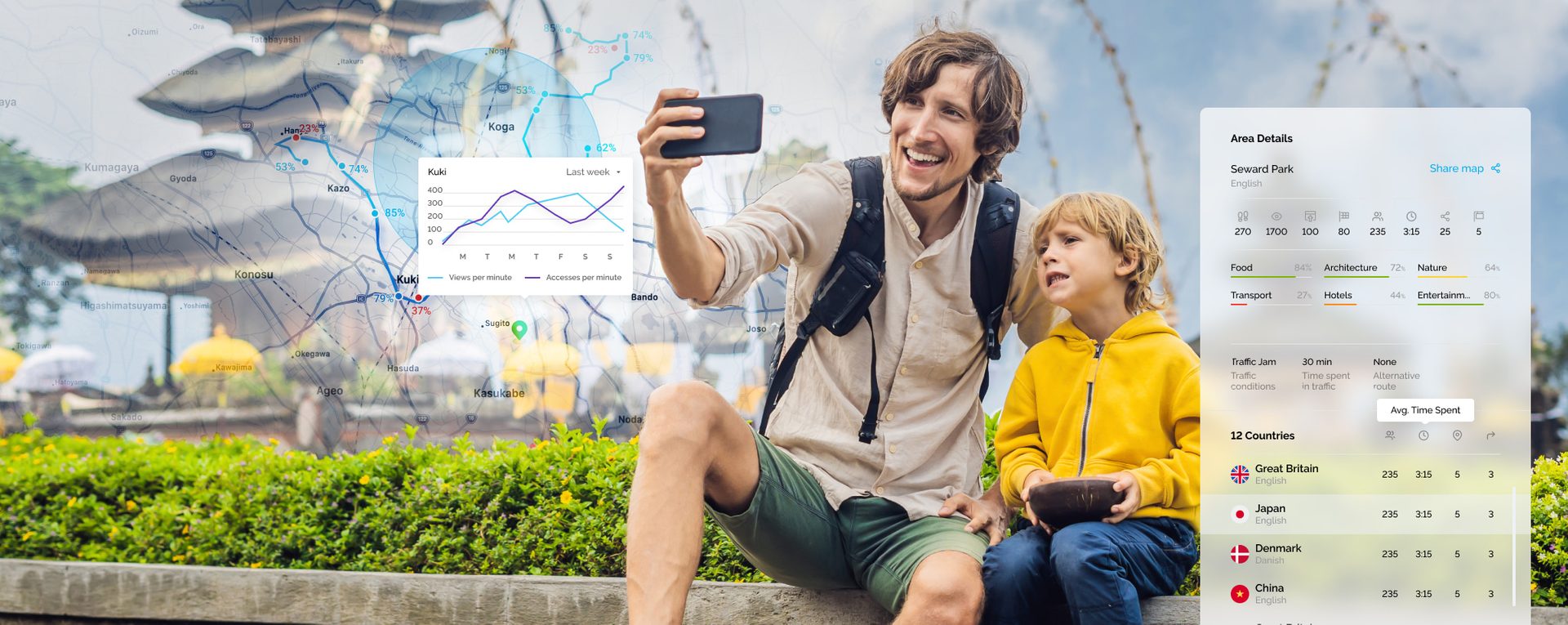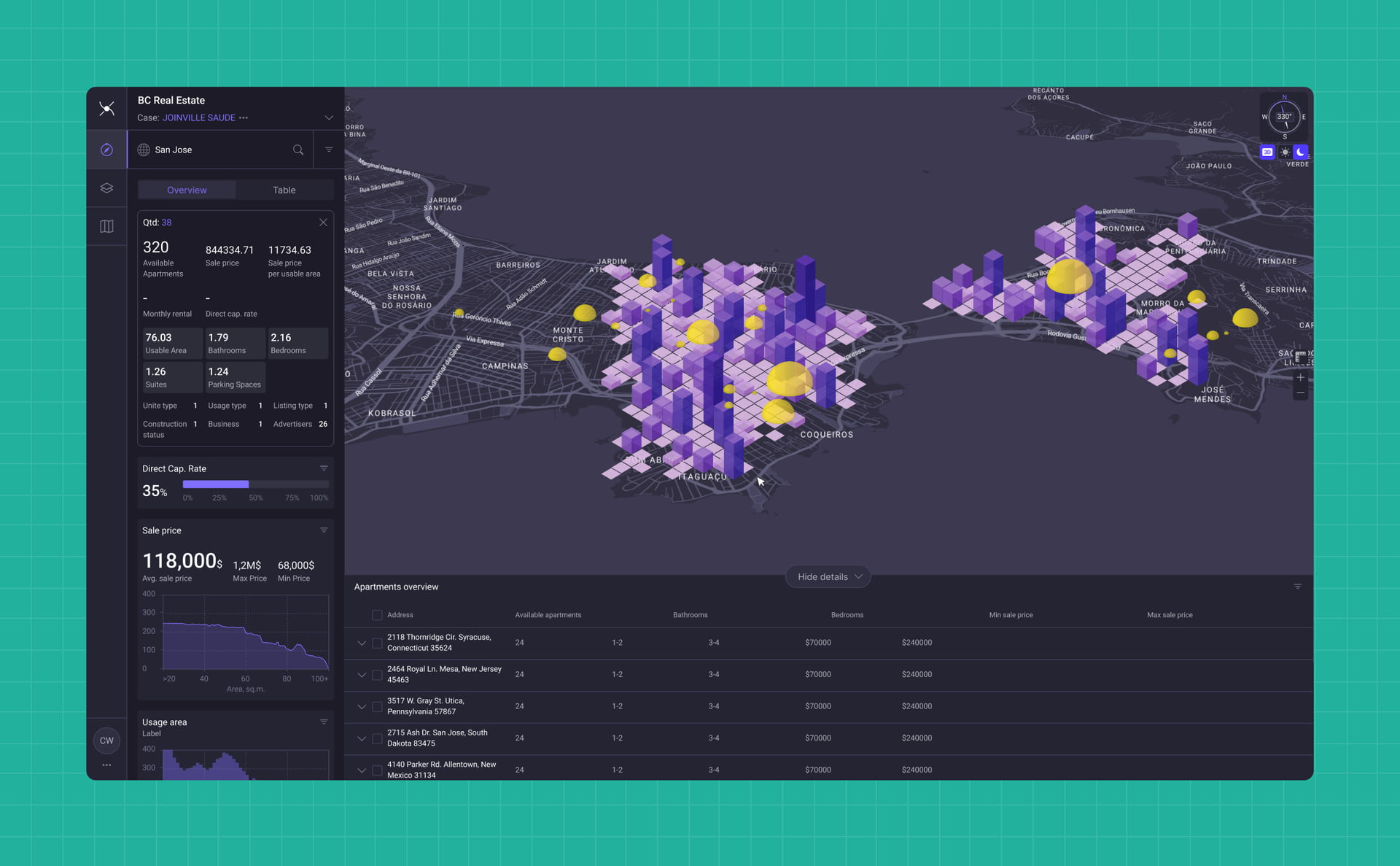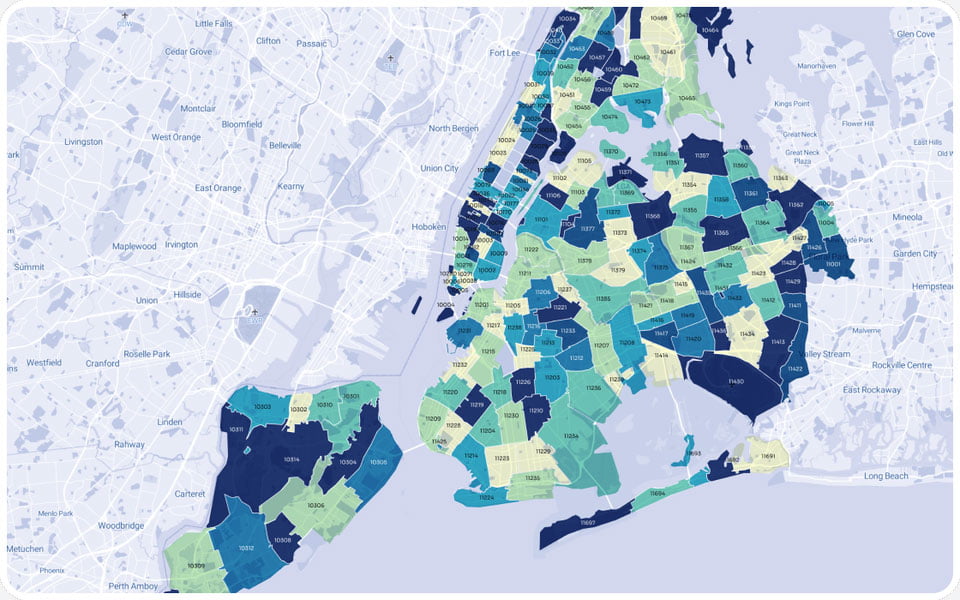Map data visualization, or geospatial data visualization services, involve the use of maps to represent and display various types of data, making it easier to understand and analyze complex and unwieldy amounts of information. We often leverage geographic information systems (GIS), mapping software, such as MapBox or ArcGIS, and data visualization techniques to create interactive maps that provide meaningful insights.
Map Visualization Agency
Map designers are a special breed in the data visualization community. To create an interactive map that is both able to convey vast amounts of information, immediately intuitive for users in terms of what is possible and able to provide usable insights is the trifecta of map visualization teams. At Fuselab we design map data visualization for various industries, including retail, logistics, healthcare, real estate, environmental science, transportation, and urban planning.

Our Map Visualization
Services and Solutions
Map Dashboard Design
Immerse yourself in an intuitive and visually appealing map dashboard that offers a tailored experience. Our expert designers craft interactive interfaces that guide you effortlessly through the world of spatial data. Get ready to explore and uncover the hidden gems within your information.
Interactive Map UI/UX Design
Engage with your data like never before, and say goodbye to challenging navigation and hello to an interactive user experience like no other. Our map UI/UX designs bring your data to life, allowing you to seamlessly explore and interact with your visuals. Let the data tell its story and open new doors for understanding and informed decision-making.
GIS Design
Our geographic information system design services go beyond simple mapping. We delve into the world of geographic data analysis and visualization. Uncover valuable patterns and relationships within your data, enabling you to make data-driven decisions that drive success.
Dynamic Map Layers
Unveiling the richness of your data experience reveals the power of overlaying multiple datasets on a single GIS visualization map. Dynamic map layers reveal intricate relationships and patterns, providing a comprehensive understanding of your information. Unleash the potential of your data with this multi-dimensional approach.
2D & 3D Map Visualization
Watch your data come to life through our exceptional 2D and 3D visualization services. Gain a deeper understanding of your information with seamless transitions between dimensions. Dive into the details and see your data from new perspectives.
Data Integration
Our data integration services seamlessly blend data from multiple sources, creating a unified view for analysis and visualization. Whether it's importing CSV files, spreadsheets, or databases, we ensure a smooth process. Get ready to explore the full potential of your data, all in one place.
Advanced Data Filtering
Our advanced data filtering capabilities allow you to refine your analysis and focus on the most relevant insights. Discover hidden gems within your data and gain a deeper understanding of your information.
Report Generation
Create visually compelling reports that combine maps, charts, graphs, and text to communicate your data-driven insights effectively. Tell a captivating story that resonates with your audience and drives informed decision-making. Let your reports become your secret weapon.
Map Visualization Portfolio
Industries We Love to Design
Interactive Maps For
Healthcare applications and disease map data visualization projects have now become more than 50% of our current project workload. Working on behalf of better health and better decision making for health providers could not be more inspirational to all of us at Fuselab.
Logistics and telematics companies build platforms to move people and goods from one place to another. However, to properly build these platforms, design agencies like Fuselab must acutely understand how a routing map data visualization is used by stakeholders to become more efficient, increase profit, and the list goes on and on.
Travel map app UI design is focuses heavily on mobile and tablet environments, as the expectations from users is constantly growing, including access to real-time traffic and public transportation data along with interesting tourist-related data. The UI needs to be 100% intuitive regardless of the users technical savviness or type of device being used.
Among the many critical services provided by city and county governments is the need to devise sophisticated plans to manage the fallout from natural disasters. A data visualization flood map can make the difference between a city brought to a halt or a city that is able to rise above the impact of a major flood.
Understanding the growth of communities and urban sprawl can best be depicted using data map visualization techniques. Using these maps and the corresponding historical data also provides a way to develop predictive analytics data to help circumvent future challenges and plan for the eventual changes taking place in particular regions.

Map data visualization can play a crucial role in helping users navigate the vast virtual reality geospatial worlds of the Metaverse. Just as maps are essential for finding your way in the physical world, interactive maps could guide users through virtual spaces, showing real-time locations, landmarks, and routes to their destinations.
Contact Us
Fill out the form!
Read Our Blogs
We are arriving at numerous inflection points in the world of data visualization and map data visualization. Here are just few of our blogs on the subject and some interesting case studies to ponder.


































